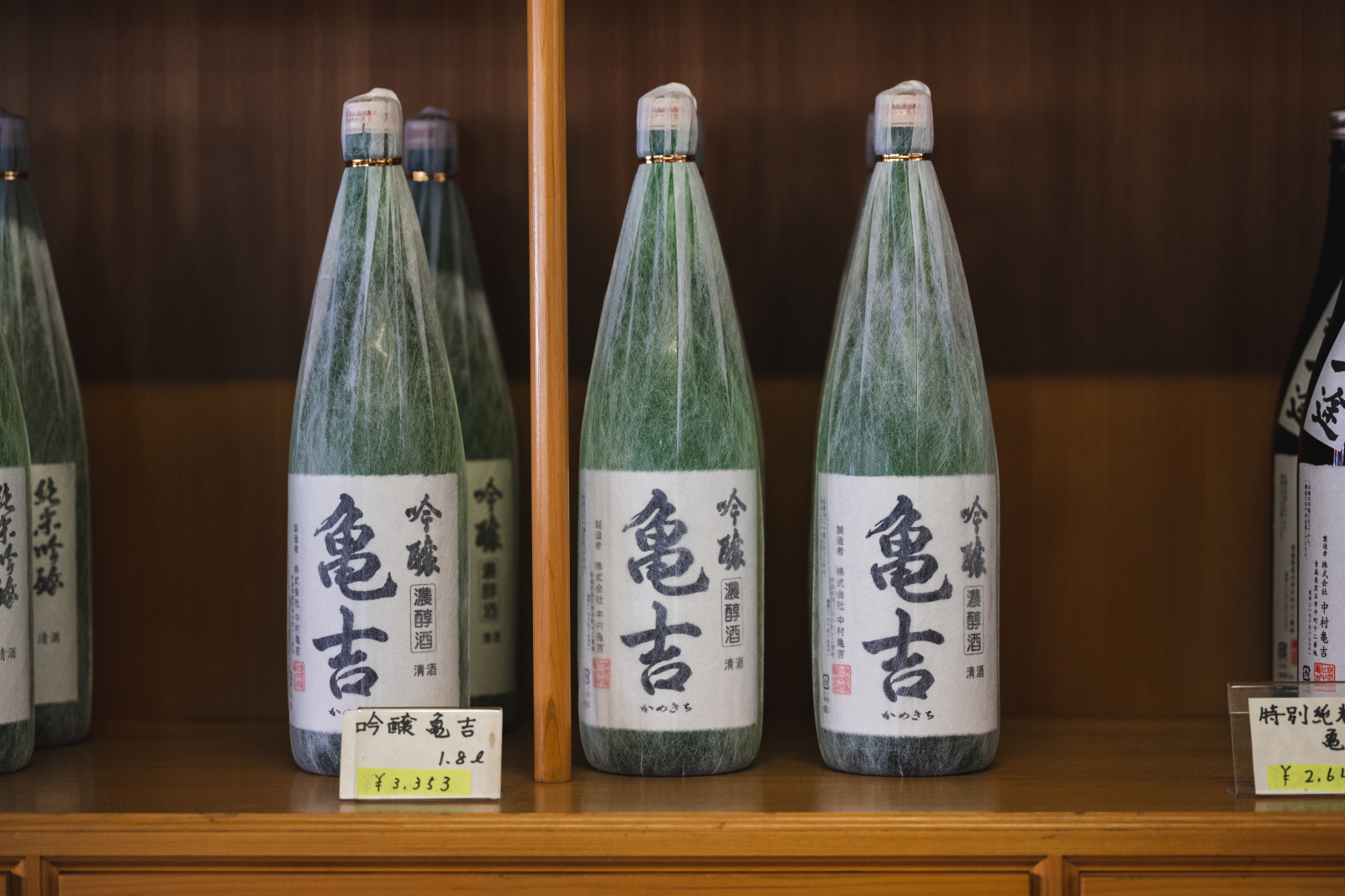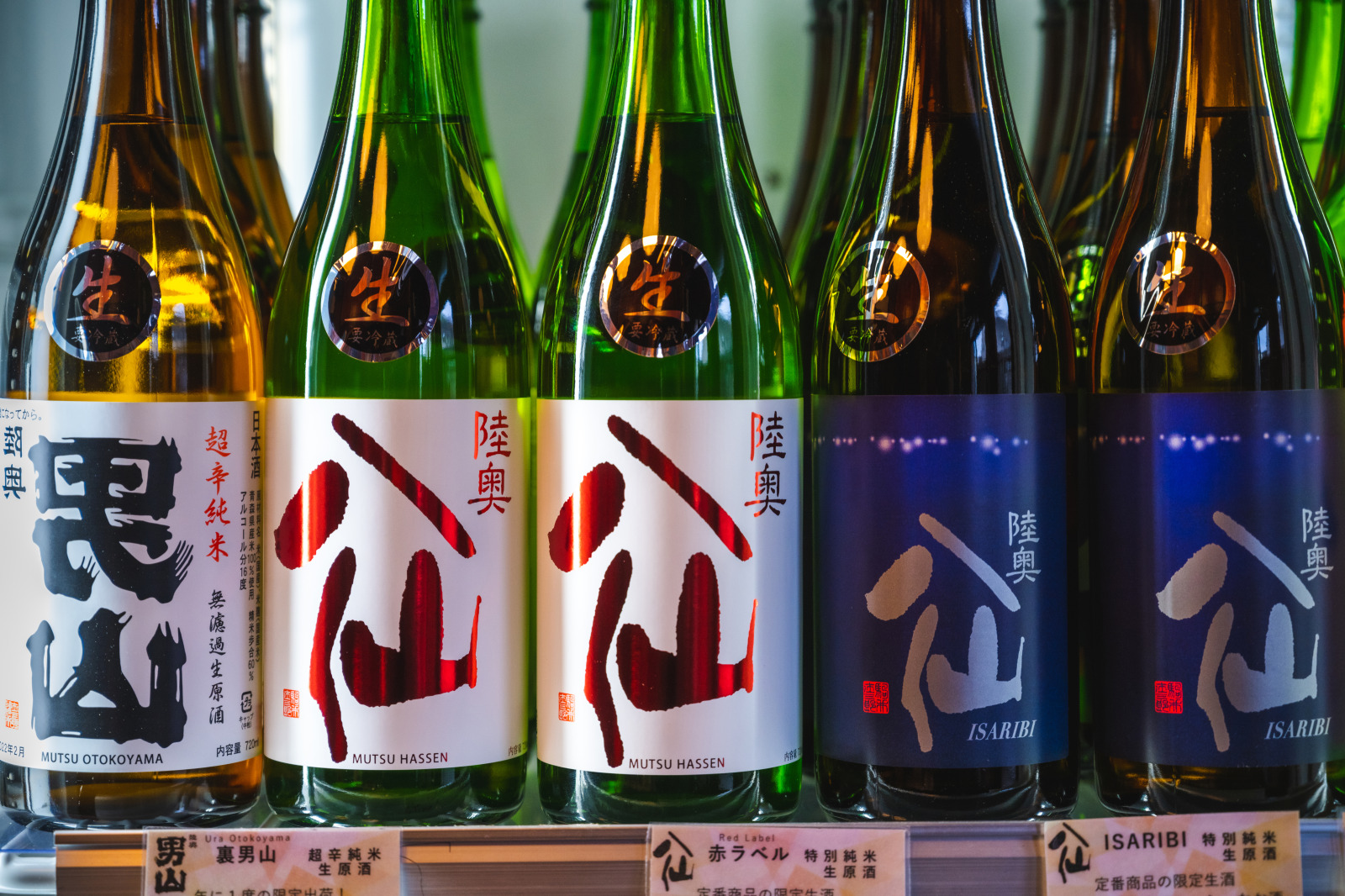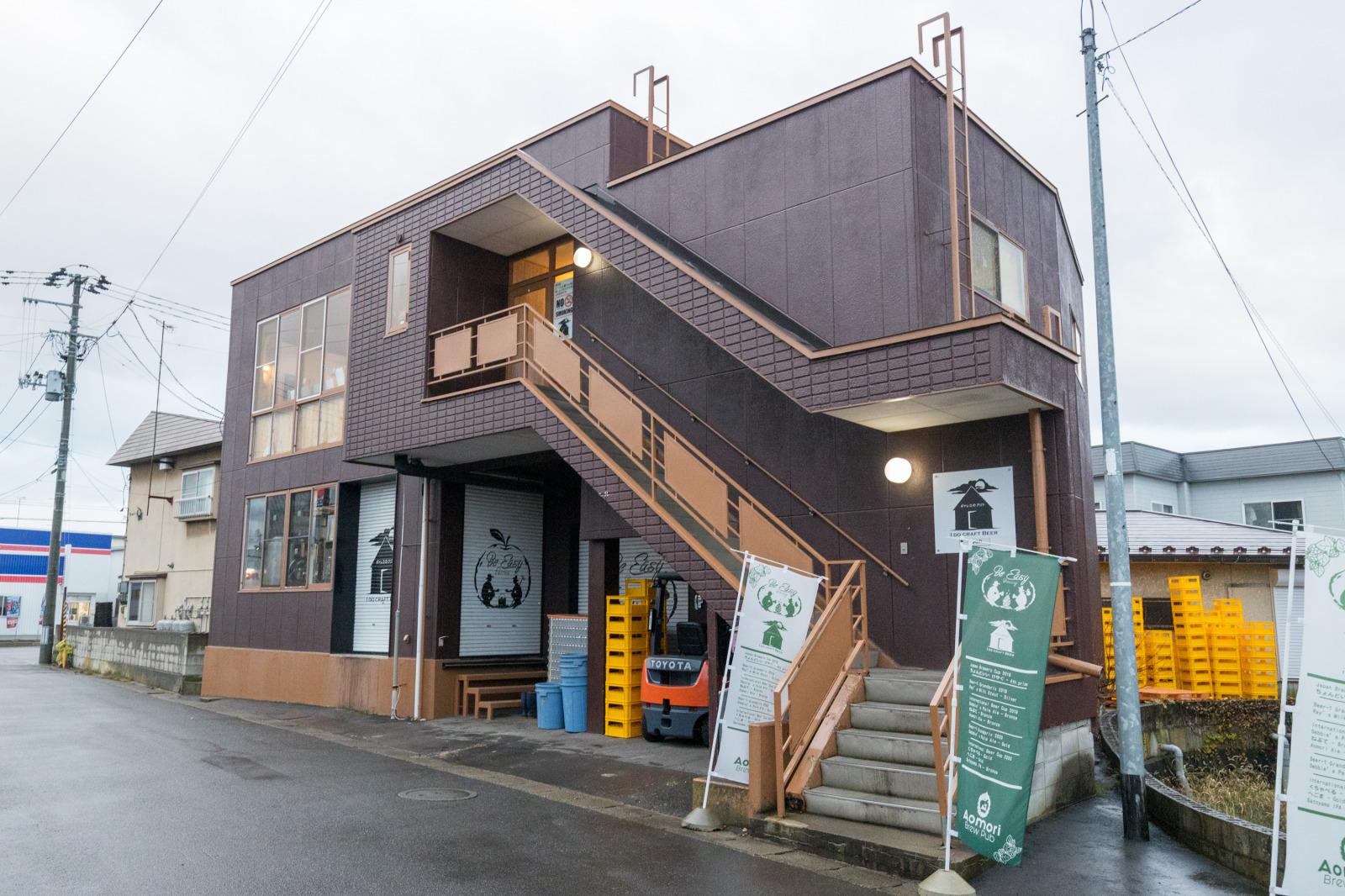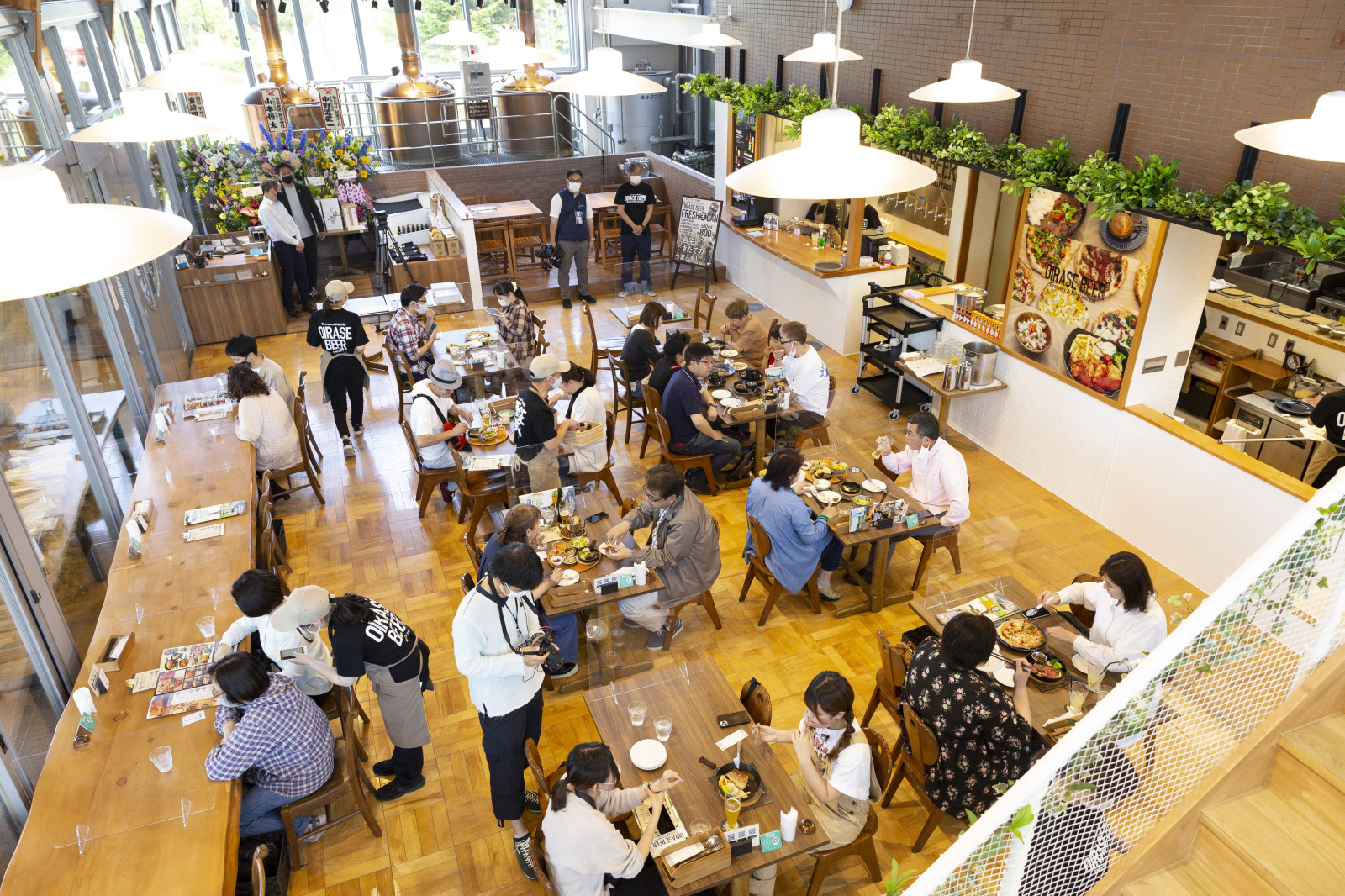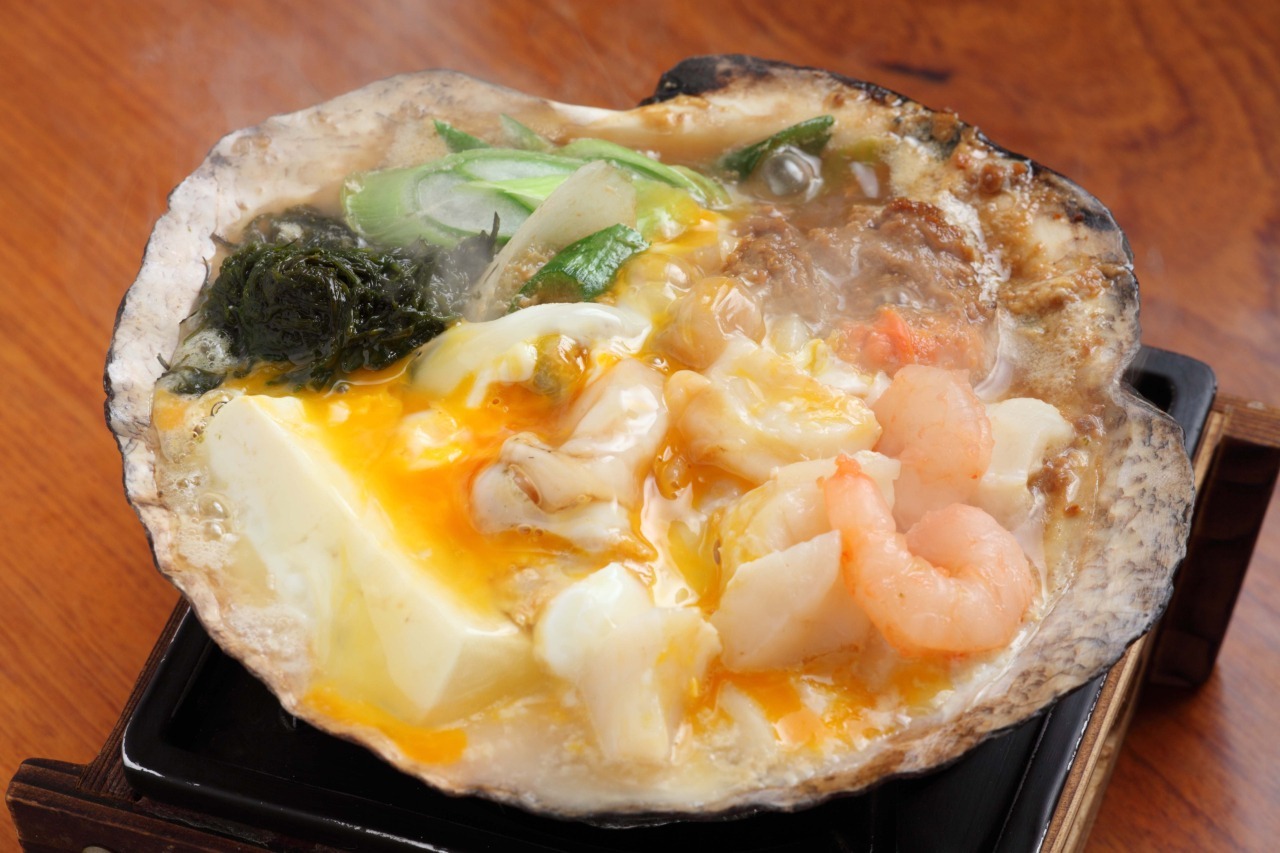Aomori’s unique local products
—The perfect souvenirs of your Aomori trip!

From traditional handicrafts to delicious sake, beer, and cider, here are some of the local Aomori products that you’ll definitely want to bring home with you or give as a gift to colleagues and loved ones.
Kogin-zashi and Nambu Hishi-zashi embroidery
Kogin-zashi and Nambu Hishi-zashi are both types of sashiko or traditional Japanese reinforced stitching techniques, originating during feudal times in the Tsugaru and Hachinohe regions, respectively. During the frigid Tsugaru winters, peasants took to stitching cotton threads into their coarse linen work clothes, known as kogin, in order to reinforce the loose weave of the fabric and trap air inside, providing insulation against the harsh cold. Over time, Kogin-zashi developed into a decorative art with intricate geometric patterns such as cat’s eyes, flowers, cows, and fish scales that show connections to everyday life and nature in the Tsugaru region.
Similarly, the inhabitants of farming villages in the Hachinohe area devised the Nambu Hishi-zashi embroidery technique to make their clothing more durable and warmer. The name of the craft derives from the fact that it often uses a diamond or rhombus pattern, which is called hishi in Japanese. Nowadays, patterns like plum blossoms and arrow feathers are also common. Items embroidered with these traditional stitching techniques, such as bags, coin purses, business-card holders, and coasters, make great gifts.
Nambu Sakiori weaving
Nambu Sakiori is a traditional “rag-weaving” technique devised by the thrifty people of the Nambu region to conserve fabric, a precious resource. Old rags and worn-out kimonos are finely torn apart into strips, which are then used as woof (crosswise) threads for weaving. Cotton threads in four colors are used as warp (vertical) threads, resulting in colorful textiles with a homey feel. Nowadays, this technique is featured in products like handbags, pouches, and slippers.
Tsugaru-nuri lacquerware
A traditional craft of the Tsugaru region with a history dating back about 300 years, Tsugaru-nuri is a technique in which wooden objects are covered with numerous layers of lacquer in different colors. This lacquer is then polished away little by little to reveal unique, “cloud-like” designs. The incredibly painstaking process can include as many as 48 individual steps. Tsugaru-nuri vessels and utensils like dishes, bowls, chopsticks, spoons, and sake cups are safe for eating and drinking and make wonderful gifts.
Nuruyu Kokeshi dolls
Many varieties of wooden Kokeshi dolls are produced throughout the Tohoku region, each with their own characteristic designs and shapes. Nuruyu Kokeshi dolls are the traditional Kokeshi dolls of the Tsugaru region, distinguished by their curvy bodies, arched eyebrows, and sharp gaze. Although they are originally a children’s toy, they have come to be appreciated by people of all ages as a beautiful traditional craft.
Bunaco woodware
“Bunaco” crafts are made from the wood of the beech tree, which is called buna in Japanese and grows abundantly in the forests of Aomori. Despite its flexibility and strength, beech wood was formerly considered unsuitable for woodworking due to its tendency to warp, but a special technique was developed in Aomori in which it is cut into strips as thin as just one millimeter, which are then rolled and slid a little at a time into coil-based shapes. This technique reduces cracking and distortion while making the most of the beautiful texture of beech wood. It also generates almost no waste compared to conventional woodworking techniques, making it an environmentally friendly production method. Bunaco products such as bowls and utensils, tissue boxes, lamps, and even wooden speakers will bring the unique warmth of wood into your everyday life.
Tsugaru Vidro glassware
Tsugaru Vidro, derived from the Portuguese word for “glass,” is handmade glassware that has its roots in Aomori’s fishing industry. A local manufacturer initially made glass fishing gear but, as demand declined with the advent of cheaper materials, instead applied its glassblowing techniques to everyday items like vases and dishware. One day, an artisan accidentally added sand from the Shichiri-Nagahama coast to the glass, resulting in a beautiful green color. Thanks to the popularity of this colored glass, Tsugaru artisans soon developed ways to create a wide variety of other hues. The colorful designs of Tsugaru Vidro glassware are inspired by the scenery of Aomori’s four seasons—the pink cherry blossoms of Hirosaki Park in spring, boldly colored Nebuta Matsuri festival floats in summer, leaves around Lake Towada in autumn, and the snow-blanketed slopes of the Hakkoda Mountains in winter.
Local sake
Brewing excellent Japanese sake depends on two key ingredients: clean natural water and high-quality rice. Fortunately, both of these abound in Aomori Prefecture thanks to its beautiful natural environment. Pure snowmelt flows from the Hakkoda and Shirakami Mountains, and the rich soil of Aomori is suited to growing brewer’s rice, a type of rice with a high starch content and low protein content ideal for sake brewing. Several varieties of brewer’s rice have even been specially developed in Aomori.
Some of Aomori’s most famous local sake breweries include Hachinohe Shuzo, Nakamura Kamekichi, Momokawa, and Narumi Jozoten. Hachinohe Shuzo, an award-winning brewery in Hachinohe City, manufactures the Mutsu Hassen and Otokoyama brands. The brewery prides itself on using Aomori-grown organic rice to meet the needs of health-conscious and environmentally aware sake drinkers. Narumi Jozoten, a family-owned brewery in Kuroishi City, makes the Kikunoi and Inamuraya brands using carefully selected local brewer’s rice and yeast as well as soft subterranean water originating from the Hakkoda Mountains.
Craft beer
The craft brewery Be Easy Brewing located in Hirosaki makes original craft beers including Aomori Ale, a microbrew available only in Aomori Prefecture. The diverse ingredients used to flavor its beers include brown rice from Aomori, Uji matcha tea from Kyoto, and fruits from all over the world. Another famous local craft beer is Oirase Beer, which has its brewery and restaurant at Roadside Station Oirase but is sold throughout the prefecture. Its great taste is partially thanks to groundwater from the Hakkoda Mountains, which is exceptionally clean due to natural filtration.
Apple cider
Although cider brewing originated in Europe, it has boomed in Aomori thanks to the prefecture’s status as Japan’s top apple producer. With Aomori-grown apples well known for their incredible taste, it’s no wonder that they also make for delicious cider. Famous cider producers in Aomori include A-Factory located on the bayside in Aomori City and Cider Factory Kimori on the grounds of Hirosaki City Apple Park.
One-stop shopping for souvenirs
If you’re short on time, the following facilities offer a wide selection of souvenirs under one roof.
Aomori Tourist Information Center “ASPAM” (Aomori City): Bunaco woodware, Kogin-zashi embroidery, Tsugaru Vidro glassware, Tsugaru-nuri lacquerware, Nambu Sakiori weaving, Nuruyu Kokeshi dolls, local sake, sweets and other local food products
A-Factory (Aomori City): Apple cider and other various apple-related products and sweets
Hachinohe Portal Museum “hacchi” (Hachinohe City): Tsugaru-nuri lacquerware and other local crafts
Youtree (Hachinohe City): Sweets and other local food products
Hirosaki City Tourist Center (Hirosaki City): Kogin-zashi embroidery, Tsugaru-nuri lacquerware, Bunaco woodware, sweets and other food products
Tsugaru-han Neputa Village (Hirosaki City): Kogin-zashi embroidery and other crafts, local food products














